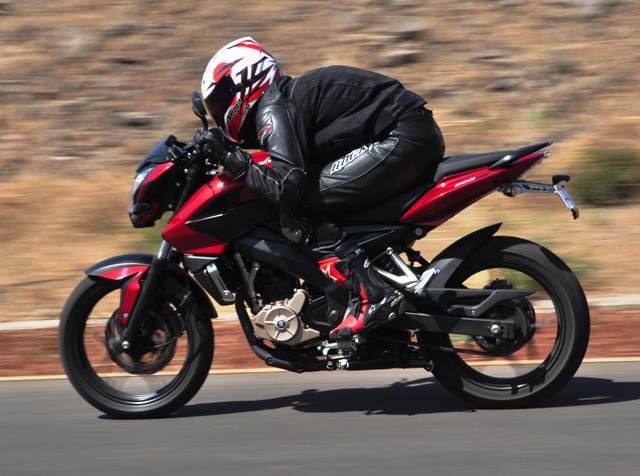



 Burly challenger - There's no other way to describe the newest entrant in the 250cc arena - the Hyosung GT 250R. We ride it
Burly challenger - There's no other way to describe the newest entrant in the 250cc arena - the Hyosung GT 250R. We ride itMeet Bhawesh. He is from Mumbai, is in the food business and thinks motorcycles are a great image booster. He is also married, has a son and is currently drooling over the black and red Hyosung standing outside a restaurant at Lonavala. When finally he does look away from the bike, he spots me staring at him and instantly assumes the bike belongs to me. Next up, he empties out a complete cartridge of questions. "So, was it my red boots or the green lid that gave me away," I indulge him. "The leather (riding) pants man," he replies adding, it would be a tad silly to be dressed like this otherwise. Point well taken given the heat, and the place, which is filled with short cotton shorts draped over lovely long legs.
Bhawesh though is more interested in knowing how fast the bike is and whether it's an import, and of course, how much it costs. On hearing that it was being assembled in India and would cost under Rs 3 lakh, he almost falls over. And when I mention 250cc, he bursts out laughing thinking I am pulling a fast one on him. After the hysteria is over though, he confides that he had in fact assumed this to be 'a' superbike. He did however mention before parting ways that he’d buy one based on the bike's looks and size alone: engine capacity, power output and handling prowess be damned.
And this - the size, the road presence and its big bike aura - is going to power the sales of the new Hyosung GT 250R in India, no question. Moreover, even though the Hyosung will cost as much as the Ninja (the most expensive 250 in the market currently), it does justify its pricing, at least on paper. It gets digital instrumentation missing on the Kawasaki (but present on the Honda CBR 250R, the other 250cc contender) besides LED tail lamps which are missing on the latter two. Also unique to the Hyosung is the front twin disc brake setup and the upside down forks, not to mention adjustable rearsets and brake lever. The Hyosung could nonetheless do with better fit and finish; it's not bad, just inconsistent.
The big bike feel stays even after mounting the GT. In fact, from the rider's perch it feels less like a 250 and more like a supersports including the seating ergonomics. The rearsets are high, the clip-ons set low and there's so much distance between the handlebar and the seat courtesy the big tank that you never really get comfortable particularly when riding at slower speeds.
Then there’s the poor turning radius and the limited clearance between the handlebar and the tank at full lock to make things even more challenging. This is certainly not a bike you would want to ride everyday to work especially given its apathy towards the rider's back and wrists. The heavy clutch doesn't do anyone any favours in traffic either; in fact, the bike as a whole needs quite a bit of physical labour to ride around; not something one looks forward to after a hard day at work.
But, over the weekend, the bike can surprise you. Of course there's no getting away from the effort required to get it to change directions or slowing it down from three digit speeds, but if you are willing to do it and believe in its handling ability, it makes for a joyous ride. The grip from the tyres is good and there's a lot of lean angle to be enjoyed as well. Plus, with a 150 section rear tyre, it gives you the mental reassurance to push it harder.
As far as the engine goes, the GT 250R uses a 249cc v-twin that makes about 28bhp. However, it is coupled to a five speed gearbox and not a six-speed unit which is currently the standard in the segment. The 'box isn't great to operate either; it's neither precise nor positive. The engine too isn't refined and gets quite vibey past 6000rpm. Moreover, the drive from the engine is also quite flat till the rpm needles ambles past this mark. But, as is the case with the bike's handling, if you are willing to put up with the vibes and soldier on, the engine does reward you. It is a high strung unit and only comes into its own past 8000rpm. Beyond that it remains alive and on a song (though in a coarse voice) till the engine limiter gets in the way, cutting short the seamless and strong pull, at a little past 11,000rpm.
The Hyosung GT 250R is clearly a demanding motorcycle and is best enjoyed when ridden hard. It’s not meant for ambling around town given it isn't easy to ride or the most refined. However, if you fancy yourself to be a skilled rider, the Hyosung, even though not very quick, can still be entertaining. As for those looking for something to pose with, well it certainly doesn't get better than this - the GT has the noise, the street presence and the big bike feel missing on the other bikes in the class.
Courtesy: www.autobild.in









































